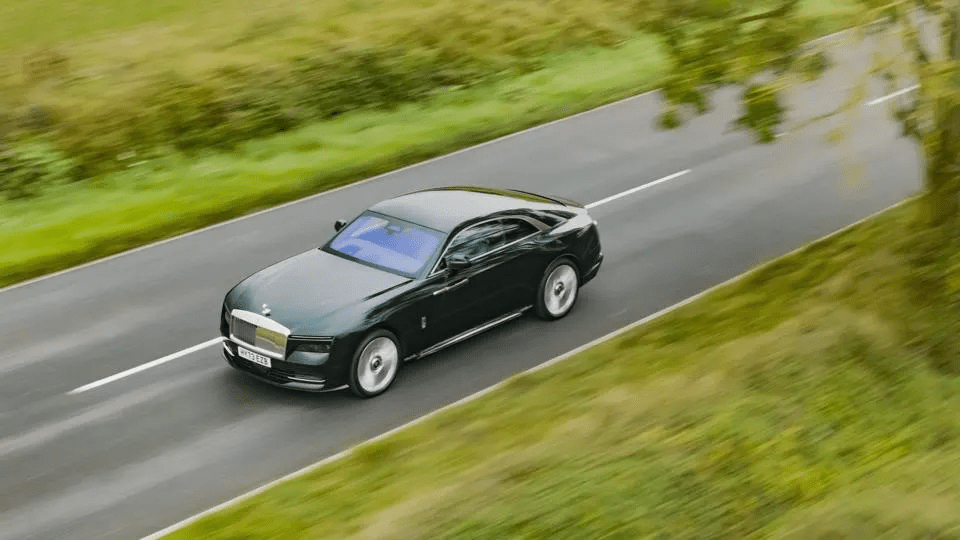A Rolls-Royce rarely needs much of an introduction, and for the new Spectre even fewer words are required. It’s the first electric Roller, and that’s really all you need to know.
This story was featured in Issue 10 of Forbes Australia. Tap here to secure your copy.
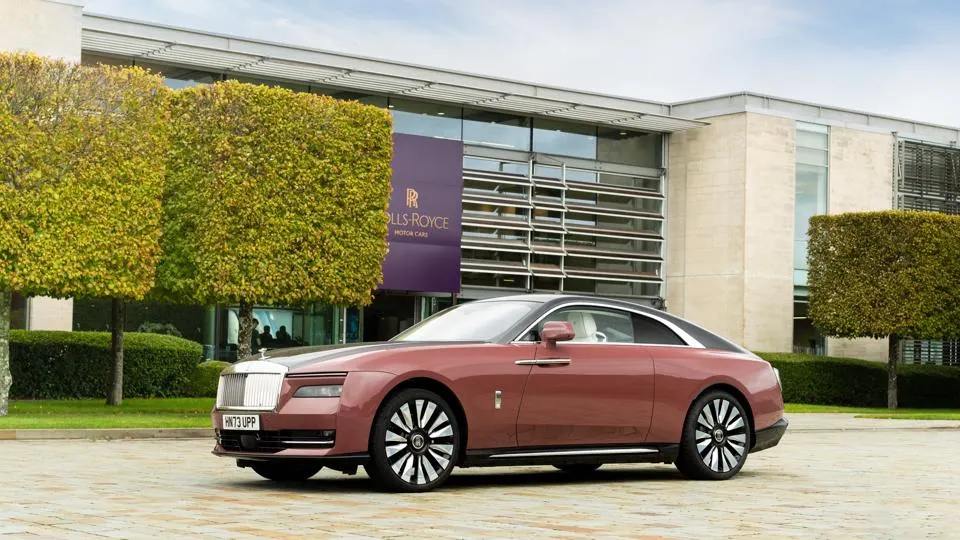
For most other manufacturers this breaking of new ground would require a deep technological dive into battery capacity, charge rate, system voltage and perhaps a diagram of a permanently-excited synchronous electric motor.
But a Spectre buyer doesn’t need to trouble themselves with all that. Instead all they need to know is this: being electric makes this Rolls-Royce quieter and smoother — and therefore more of a Rolls-Royce — than any other.
That’s it. That’s the sales pitch.
Follow-up questions? Well, being electric also makes it quick off the line, but not pugnaciously so.
The massive battery and pair of electric motors produce the sort of torque I imagine an aircraft carrier might be capable of, and with a stretch of your toe you’ll soon feel a similar amount of momentum too. For a two-door car the Spectre is truly massive.
Its 102 kWh battery pack is heavier than some entire cars; its doors occupy much of an extra parking space each when fully opened.
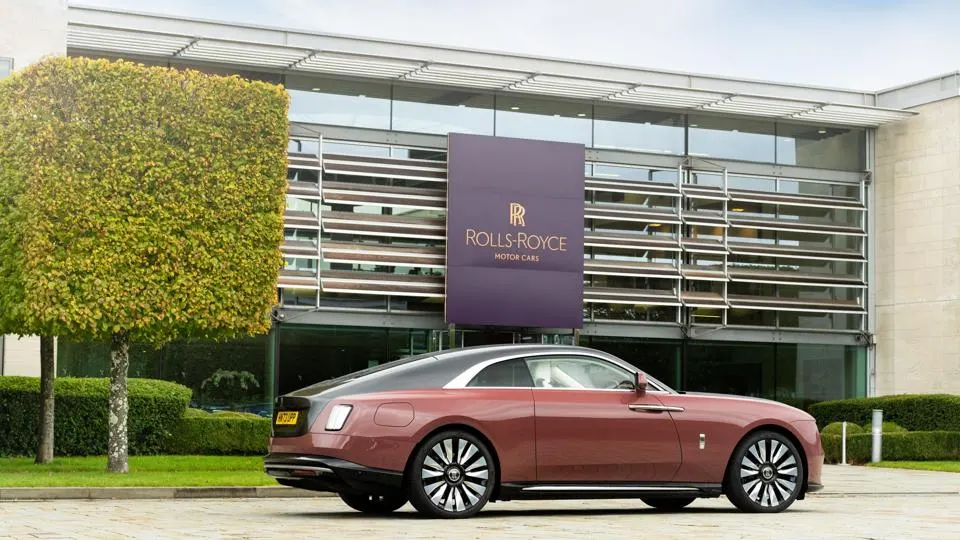
There’s a sharpness to it though, despite the scale. It clearly belongs to the contemporary RR family, but the shallower headlights and revised front grille inject a dose of fresh DNA into the mix.
The Spectre is nicely proportioned, to my eyes at least, and performs that clever automotive design trick of suiting a huge range of colors and specifications.
The lead image of this article is the actual car I drove, with its peachy morganite bodywork contrasted with a gray hood, roof and C-pillars.
It’s a striking colorway without being vulgar, but more discrete buyers will be pleased to know the Spectre looks just as good in plain old green, pictured below.
Prices start at around $420,000, but you can easily change the four for a five if you indulge in the sort of customization Rolls-Royce is famous for.
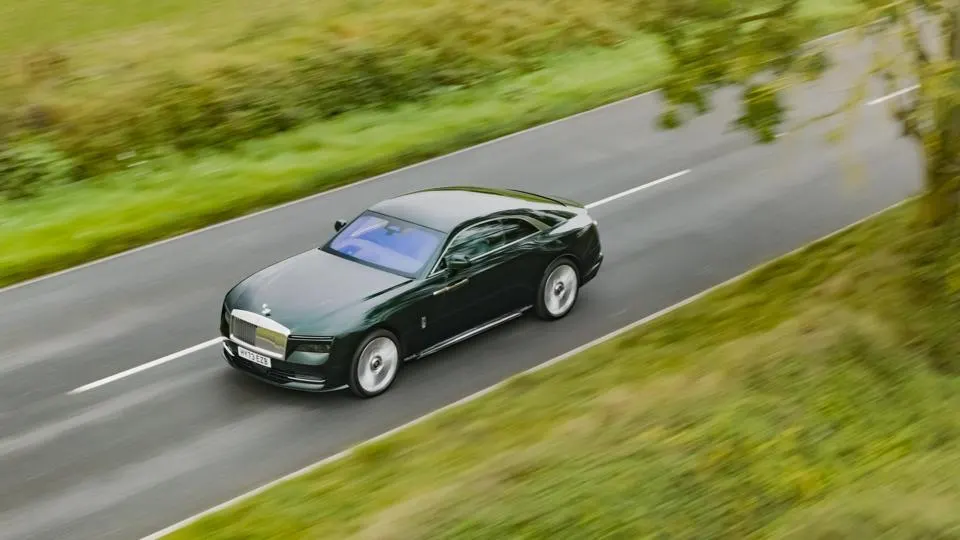
Those gargantuan doors are hinged backwards, as is Rolls-Royce tradition, and make it easy enough for your rear passengers to clamber aboard – and they can be full-sized passengers too, as while it looks like the sort of 2+2 sports car where the rear seats are best only for under-12s, the Spectre’s scale deceives its styling and there’s plenty of space back there.
You’d never ask your chauffeur to drive the Spectre though. That’s what the Phantom is for, so really it’s an electric family car, or a zero-emissions way of getting to the golf club.
Press the brake pedal to close the powered door and you’re greeted with an interior that is almost exactly the same as every other car Rolls-Royce currently sells.
From the solid metal door handles, to the perfectly damped organ stop-style ventilation controls, the delicate gear selector stalk, the central volume control knob and the Rolls-branded BMW iDrive infotainment system, it’s all very familiar.
That’s no bad thing though, because Rolls-Royce interiors are beautiful places to be – and yes, the thick wool floor mats and branded umbrellas deployed from inside the front fenders are present and correct.
You’d think the switchgear would feel dated by now, but it still somehow feels just right.
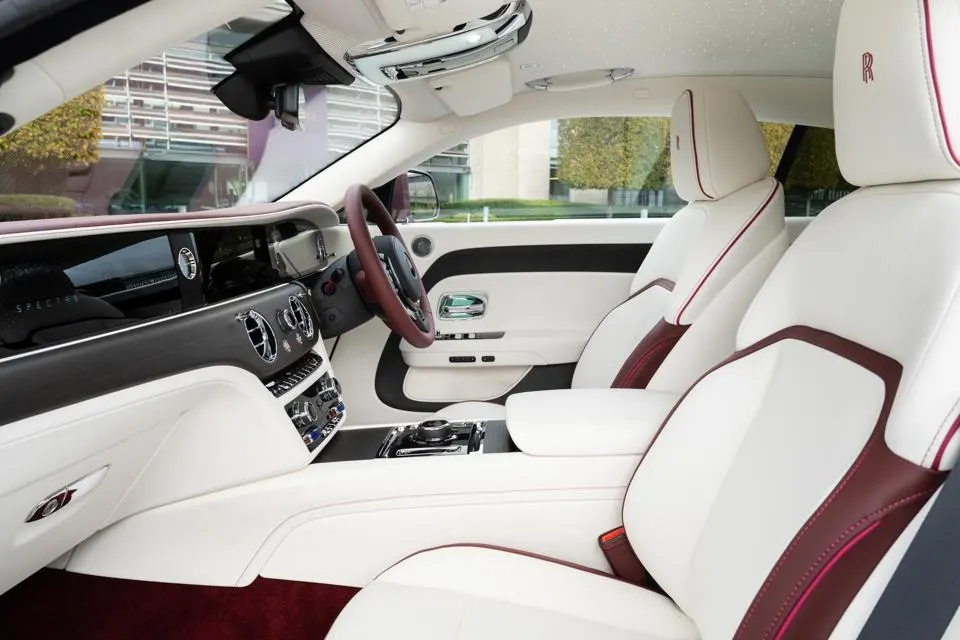
The only difference in the cabin is how the analog dials have been replaced by a digital display. The user interface is lovely, partially mimicking physical gauges but also looking modern enough to suit a new EV.
There’s a speedometer front-and-centre, flanked by a dial showing battery percentage and range on one side.
An electric power reserve meter is on the other side, its hand sweeping downwards from 100 to zero when the driver accelerates, or rising beyond 100 when coasting, using regenerative braking and pushing energy back into the battery.
I’m starting my day with the Spectre at Rolls-Royce’s newly-refurbished Sunningdale dealership, a short drive to the west of London and close to affluent Ascot and the private Wentworth estate.
I steer the nose out of the parking lot, guided by Eleanor, the famous Spirit of Ecstasy hood ornament, who is more streamlined on the Spectre than other models, crouching lower, seemingly braced against a greater headwind.
Like all modern Rolls, the Spectre’s enormous presence quickly recedes once you’re behind the wheel. I don’t know how, but Rolls-Royces always do this; the intimidation disappears as soon as you set off.
It’s a big car – a frighteningly expensive one, too – but it’s maneuverable, it’s easy to see out of and it’s on your side. Just try to avoid London’s width-restricted roads, squeezed by restrictive barriers to a perilous 6ft6 in some cases, and you’ll be fine.
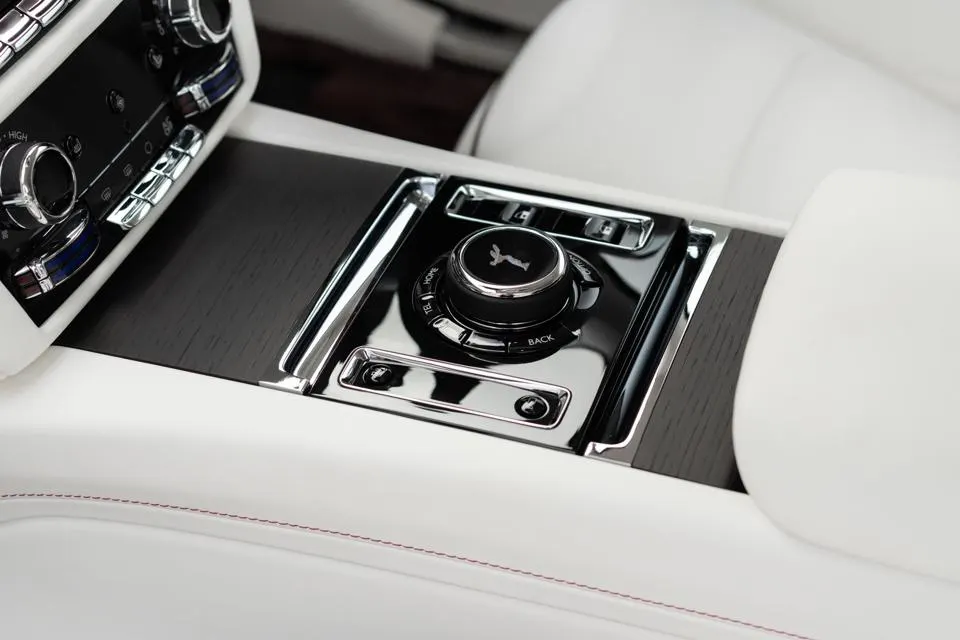
Once your brain has adjusted to the proportions (something that can admittedly take this Mazda Miata driver a few miles) it’s the silence that takes center stage.
All Rolls-Royces are quiet – you’ll be well aware of the old adverts stating how the dashboard clock is the loudest noise at 60 mph – but the Spectre is almost spookily so. I’m driving on a fairly horrid February day.
The roads, already resembling a potholed and broken lunar landscape from the freezing and thawing of winter, are covered in deep puddles, the rainfall and camber creating rivers flowing across the lane. Yet the Spectre, and I, barely notice.
The enormous weight is helping here, making the car feel surefooted and as if it could simply push aside large bodies of water in biblical fashion. With a driver aboard the scales are tipped at almost 6,600 lbs, or close to three tons.
There’s always a sense of weight and momentum, but the 577 horsepower and 664 lb-ft of torque help gloss over the bulk, as the masses of effortless thrust produced by electric motors does in most EVs.
The Spectre will sprint to 60 mph in 4.2 seconds if you really want it to, and on winding country roads it’s surprisingly enjoyable, but it feels far more comfortable on a highway cruise.
Here, the silence is all-consuming, the sound system is world-class, the leather is buttery (smells great, too) and ride comfort is unrivaled. The famous ‘starlight’ LEDs twinkle above me and the occasional shooting star streaks across the headlining.
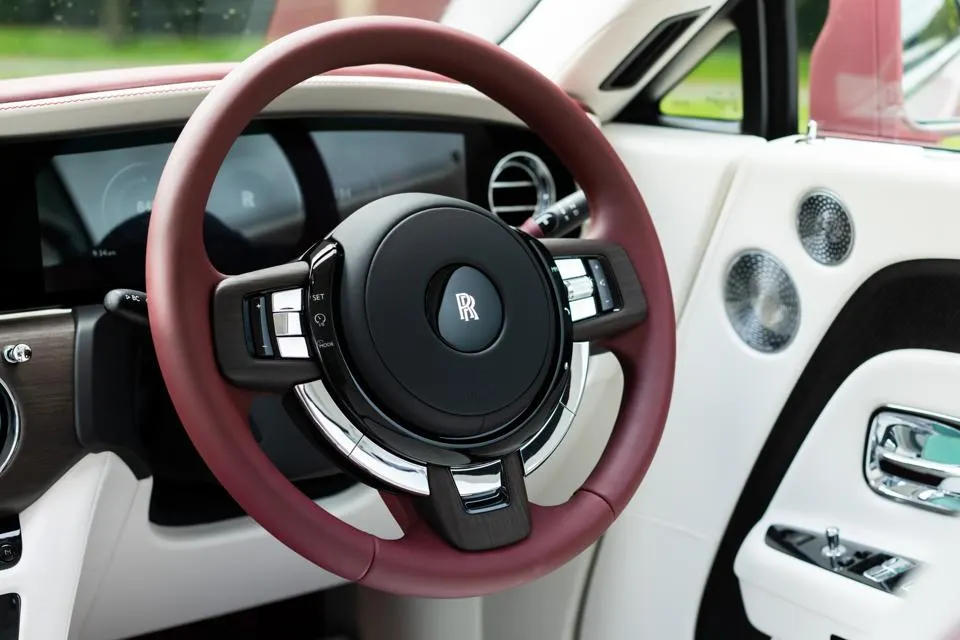
It’s the sort of car you could drive all day in total comfort, but the concern of electric range lingers.
The Spectre I drove started the day with 100 percent charge and an indicated 262 miles of range – some way short of the claimed 321 miles using the WLTP test cycle used here in Europe, but right on the 264 miles of the stricter EPA cycle used in the US.
The maximum charge rate is a decent 195 kW and a top-up from 10 to 80 percent is claimed to take between 30 and 40 minutes.
So a long road trip with well-planned stops at high-speed chargers is perfectly possible, but I imagine most Spectre drivers will charge at home and only ever drive to familiar locations well within reach.
The golf club, the country club, your Hamptons holiday home, the kids’ school or a familiar hotel with facilities for an overnight charge. That sort of thing.
It’s not a hyper-miling range king built to go further than any other. But spending an hour or two in the sanctuary of a Spectre, with the cozy welcoming of a private members’ club at the end, feels like a wonderful way to go motoring.
This article was first published on forbes.com and all figures are in USD.
